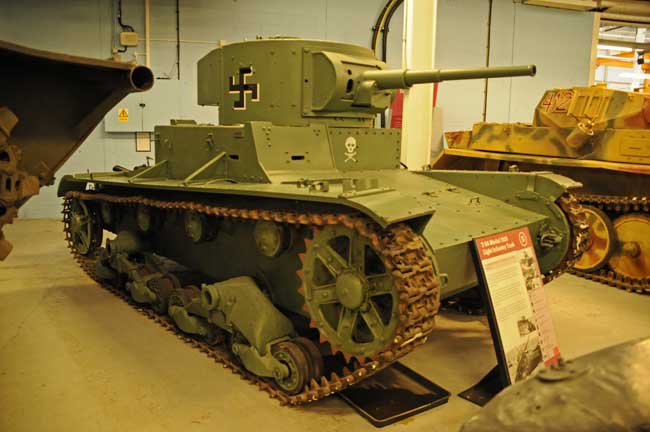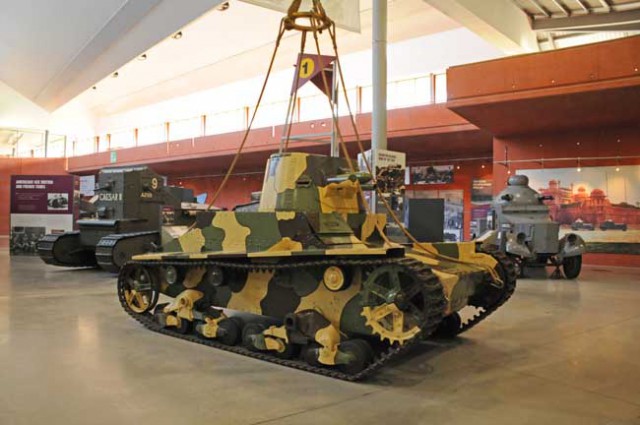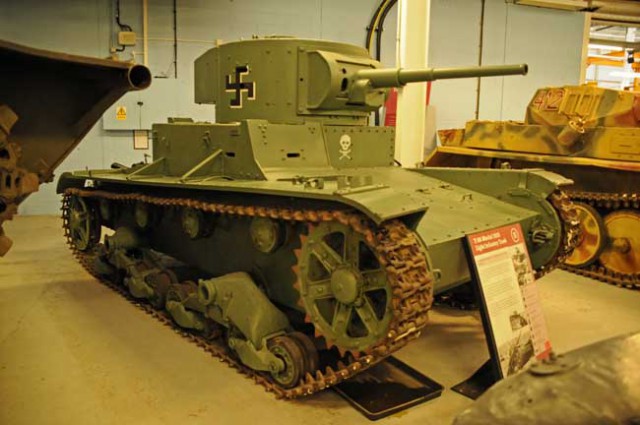Ok, ok. Great battle tanks of the Second World War? The Russian T-26 doesn’t exactly spring to mind does it? I mean, it’s Russian and its not the T-34 so…!
That may sound harsh but the masses will mostly think of the obvious, the Sherman, the Tiger, the Panther and afore mentioned T-34. But the T-26?
Well, I’d heard of it, at least, and as armour isn’t exactly my ‘thing’ I thought I’d investigate further. Now, this tank wasn’t (excuse the pun) exactly one of the ‘big guns’ It was, however, a total workhorse for the Russians and the more I read this Osprey book the more I realised that the Germans pitted against this piece of armour must have been sick of the site of it, and somewhat scared, too.
Even by 1941, as Germany swept through Russia the T-26 was outdated. Relatively slow with a top speed of just 19 mph, it had insufficient armour for tank warfare. Its main armament was a 20-k-45mm gun and it had a top range of 150 miles on roads. Across rough terrain it fared a lot worse. But here’s the point: It was never really intended to face other tanks in massed battle. Though, as it proved in the Spanish Civil War, when it did come face to face with hostile armour it generally came out on top.
The Vickers E Type tank was the basis of the Soviet T26. Examples of both can be seen at the Tank Museum, Bovington. Pix by Mark Barnes for War History Online.
It was a support tank as such, carrying an amazing array of weapons from dual and quad machine guns to flame throwers and mortars. It was an observation platform and a radio shack. It was a moving battlefield HQ and a self-propelled gun. It was in essence, to the Germans, a huge pain in the backside and with the sheer number produced; over 10,000, it wasn’t going away, either. That said it was a little temperamental to say the least. It sounded as loud as a jet engine and was far from stealth-like. It had a nasty habit of rattling itself to pieces and threw its rubber tracks whilst on roads. The T-26 was liable to chew its own gearbox to pieces before spitting it out at the roadside. The Russians loved it!
It could either be welded or riveted together, or both. A dream for the manufacturers and their slack wartime processes but a nightmare to the crews fighting inside them. Noisy, full of fumes and offering a jaw-breaking ride, these were the shotguns of the armour world. It was more of an agricultural tool than a comfortable, safe fighting vehicle.
More tankette than tank, this tracked menace fought in virtually every major battle on the Eastern front, causing huge casualties to the enemy and keeping their morale low whilst bolstering that of the Red Army. Across fields and farmland or on the bombed streets and burning cities, it rumbled on relentlessly and had its finest hour, albeit a muted and underestimated one. It looked insignificant and subdued. It was in reality a big player and a venomous one, too.
In this Opsrey edition Steven J Zaloga tells us of the tank’s history (it was in fact a British design from Vickers-Armstong). We learn of its development, acceptance and subsequent decline. By 1944, tanks were fast, but war moved even faster than any land vehicle and the T-26 found itself in a somewhat supporting role in far flung conflicts in corners of the Earth such as China, Finland and Iran.
Plagued by frequent breakdowns on an already out of date vehicle, coupled with a lack of spare parts and of trained crews; the T-26 slowly faded into the great battlefield in the sky.
Reviewed by Phil Hodges for War History Online
T-26 LIGHT TANK
Backbone of the Red Army
By Steven J Zaloga
Illustrated by Henry Morshead
Osprey Publishing
New Vanguard 218
ISBN 978-1-4728-0625-3



